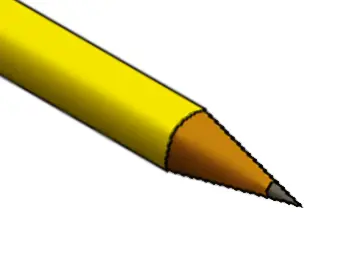(this is worse)
fighting climate change by burning petroleum! Yay
They are fighting not only the symptoms, but also the root cause
Oil in plastic from: bad, icky, kills turtles
Oil in fire form: good, warming, organic
Seeing as we don’t fully understand the effects of micro plastics, it might not be.
I’m still convinced that micro plastics will be the final nail in humanity’s coffin, not climate change.
I think worrying about something that’s an unknown risk while ignoring the very real known risk is somewhat illogical. Especially since I’d imagine there are more than 2 possible solutions for a problem like this. Also this assumes that the produce wouldn’t end up being packaged in some form of plastic at some point before arriving to the consumer anyway.
Humans have had several generations of exposure to microplastics. Other closely related mammals like rats have had potentially a hundred generations. One of the reasons plastics are so successful in so many applications is that they are chemically extremely inert. I’m not saying there will be no problems, but if there was going to be a catastrophe, I think you would be able to point to signs by now.
You mean signs like decreased fertility? https://yaleglobalhealthreview.com/2025/05/19/microplastics-and-infertility-an-invisible-crisis/
And that’s why I think they’ll be the nail in our coffin.
Humanity can survive climate change; adapting to our environment is one of the reasons we’re the dominant life form.
Obviously this isn’t saying that climate change is good, but humans have made it through a bottle neck before. But you can’t survive a bottle neck if you can’t make more people.
Plus, the environment would recover when most of humanity is wiped out. Plastics are here for the next few hundred years at least.
Don’t threaten me with a good time; human infertility is a good thing. But if we are affected, it’s likely others are as well.
Oh nooo… Not the fertility. We definitely aren’t an overpopulated species putting extreme strain on all our environments and the planet as a whole. How can we get by if some, not all, breeders can’t fulfill their animalistic urge to have shitty kids?
Too many people anyway
humanity’s
idiocracy but plastics based - yep.
This is only done when there’s an unexpected frost in spring or summer when the poly tunnels have been taken away.
A while ago, I saw a documentary where they had a big-ass fan on an apple orchard, which they would turn on early in the morning.
The problem is that when it cools down in the night, it can dip below freezing temperatures, which would damage the blossoms, if it stays that low for too long. And the cold air gets trapped between the apple trees, so just creating some artificial wind is apparently a pretty good solution to untrap it and therefore allow things to warm back up as soon as the sun hits.
Just found it interesting that this is a common enough problem, without requiring more drastic solutions like actual heating, so that they came up with this idea.
The documentary is in German, but you can see it at 5:00 here: https://www.ardmediathek.de/video/Y3JpZDovL3dkci5kZS9CZWl0cmFnLXNvcGhvcmEtNzJhZTQ5NTctNDkxOS00YTRkLTk0ZTItMGU0YWQwYzFkODE1
Turns out that this is common in Japan for tea fields. They mount big fans on poles all accross the field for it (you provably have to zoom in to see them)

I admit that when you said “big fan” I imagined a wind turbine in reverse.
Zooming into the picture, I see it’s more like desk fans on sticks. I’m sure they’re bigger than that really, but is it really too much to ask for a windmill that does work that way?
At this size I imagine you’d have to worry about the fan generating enough force to start tilting and falling without proper support
Some varieties of apples blooms are frost sensitive. Others can shrug off a frost and not really care. It’s a genetic difference in the cultivars.
https://www.degruyterbrill.com/document/doi/10.1515/biol-2025-1107/html
So if you see a big ass fan in the orchard, it’s because the grower wanted to push a variety that is not well adapted to the local environment.
In Germany frost is combated by spraying vines with mist. Freezing water releases heat, which raises the temperature by a few degrees.
Fascinating
In one of the Laura Ingalls books they run around pouring water on top of their crop early in the morning when it turns out it’s frozen. It seems to be an old method.
Seems to be worse ecologically
It’s actually not. We have entire regions covered with vines. We can’t wrap the whole France in plastic, it’s just not possible. But we can predict where it’s going to freeze and when, so we take such measures on very specific zones with precise timings. So this only happens a few times a year, at precise locations and not for long
It’s an old cheap method.
We have much better ways of protecting crops from frost including reusable netting/row covers with supplemental heat from electric heaters. However they cost more so…
Electric heaters are wasteful. How about spending that energy wisely while also generating heat?
https://fedia.io/m/nottheonion@lemmy.world/t/2828343
(Sorry for the full link, I can’t figure out how to reference an article on another instance on the mobile app.)
It works in Minecraft
don’t you only see these being used when other preferable infrastructure has already failed, and it’s like, an emergency or something?
That’s exactly why this is done. It’s an emergency operation if there is a sudden freeze that would kill the vines.
A sudden freeze will not kill the vines. Grapes are extremely tough. It can hurt the flower buds though. A severe enough freeze can cut the yield.
For wine grapes less fruit in the bunches = lower quality wine.










